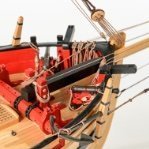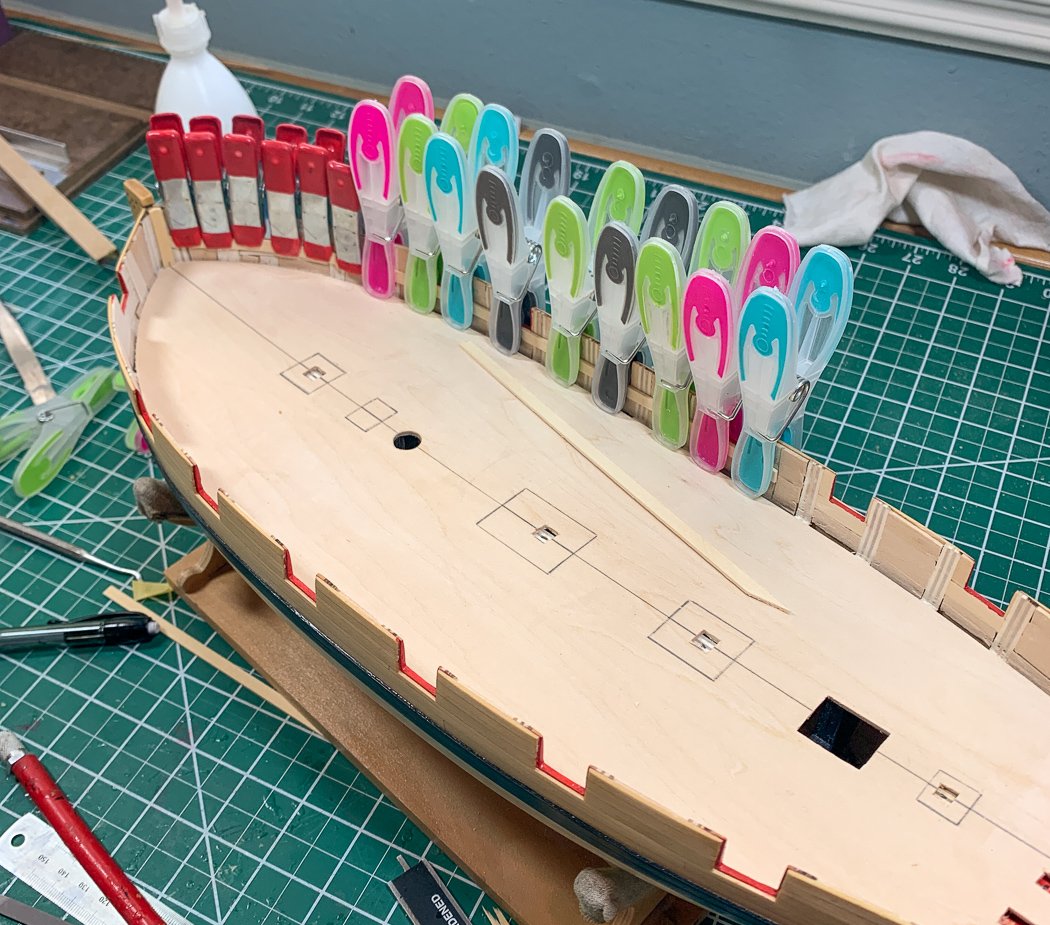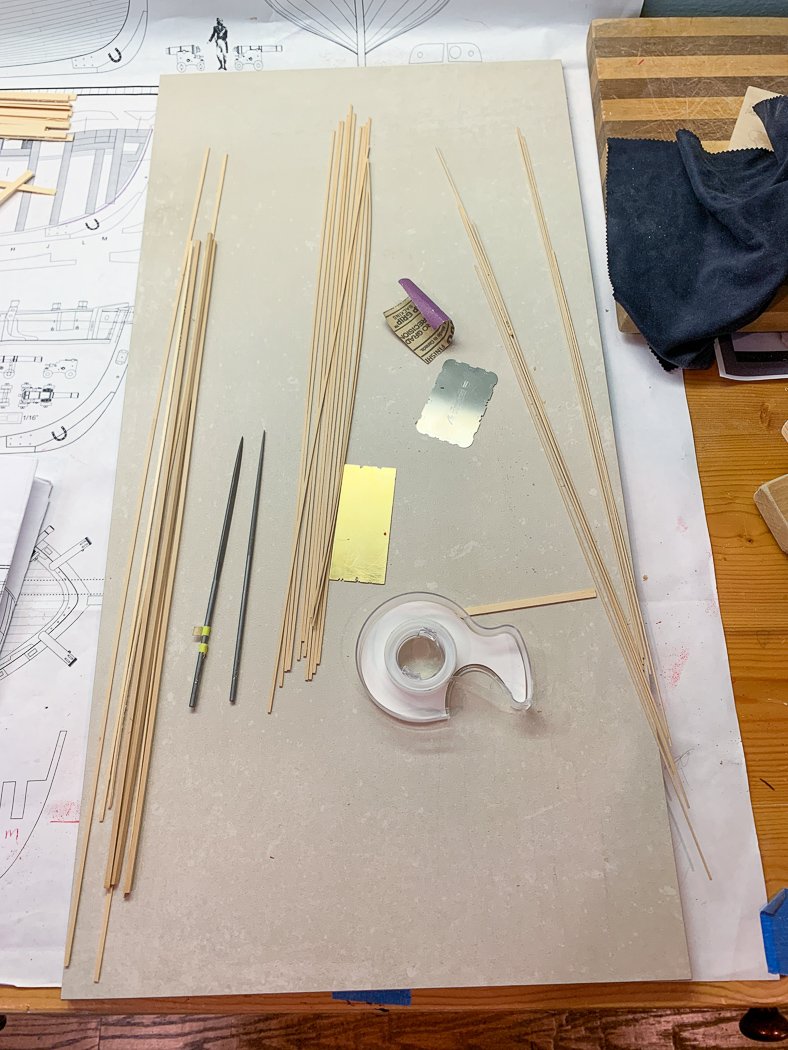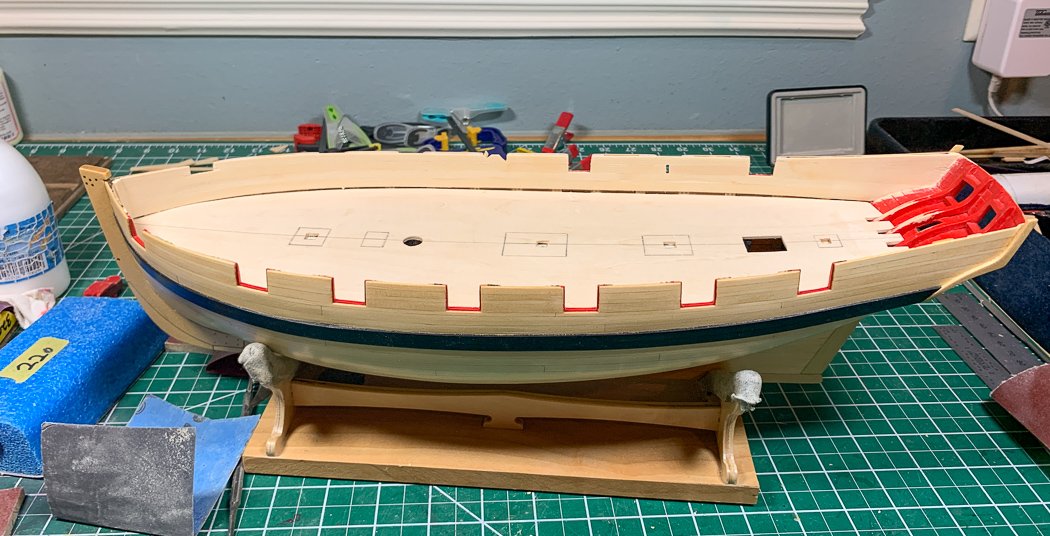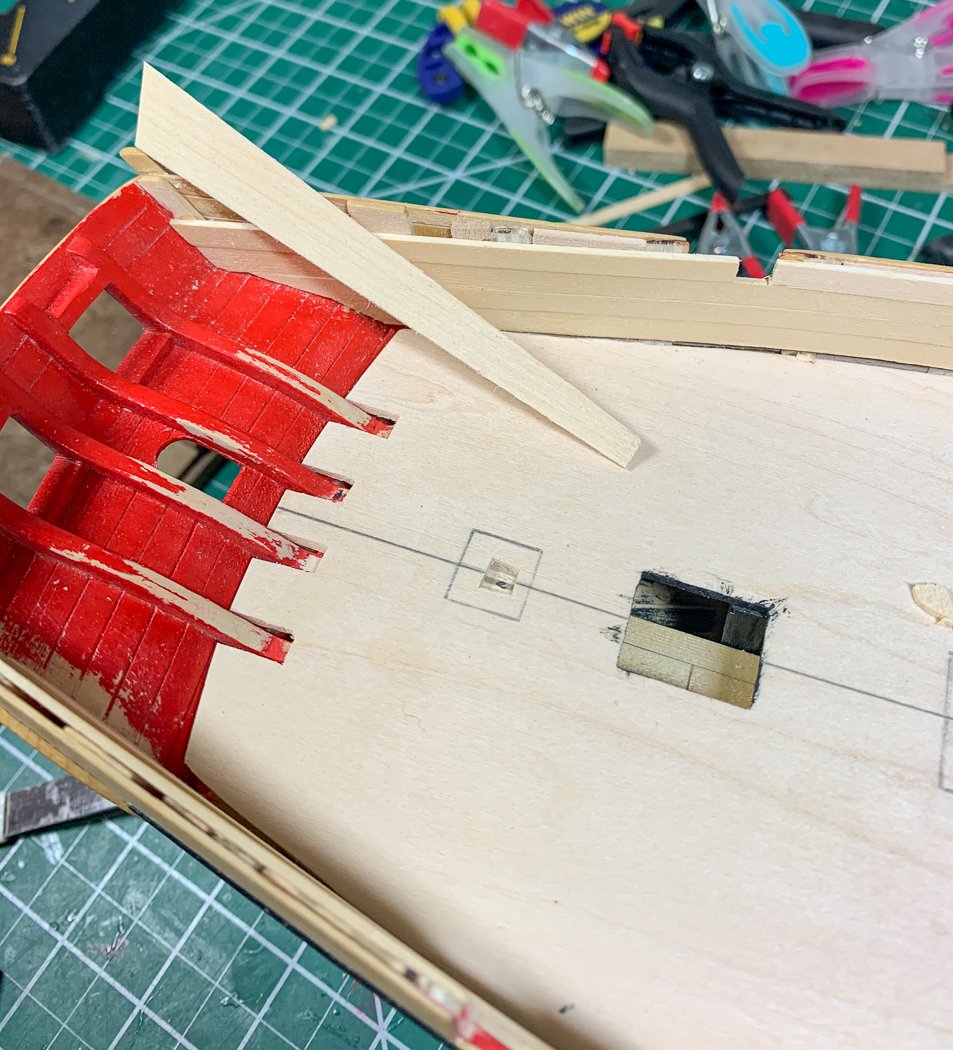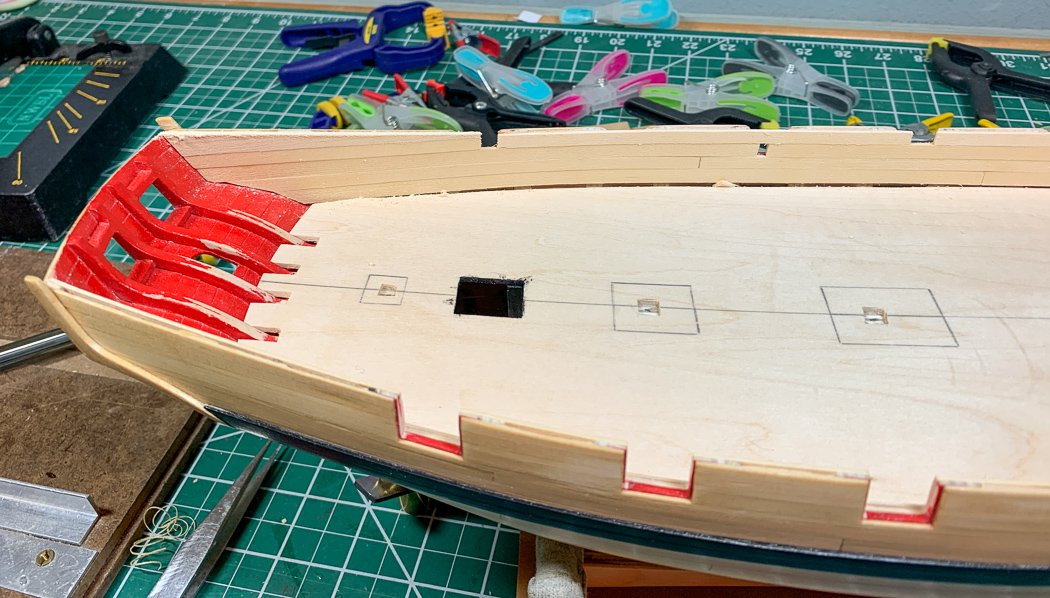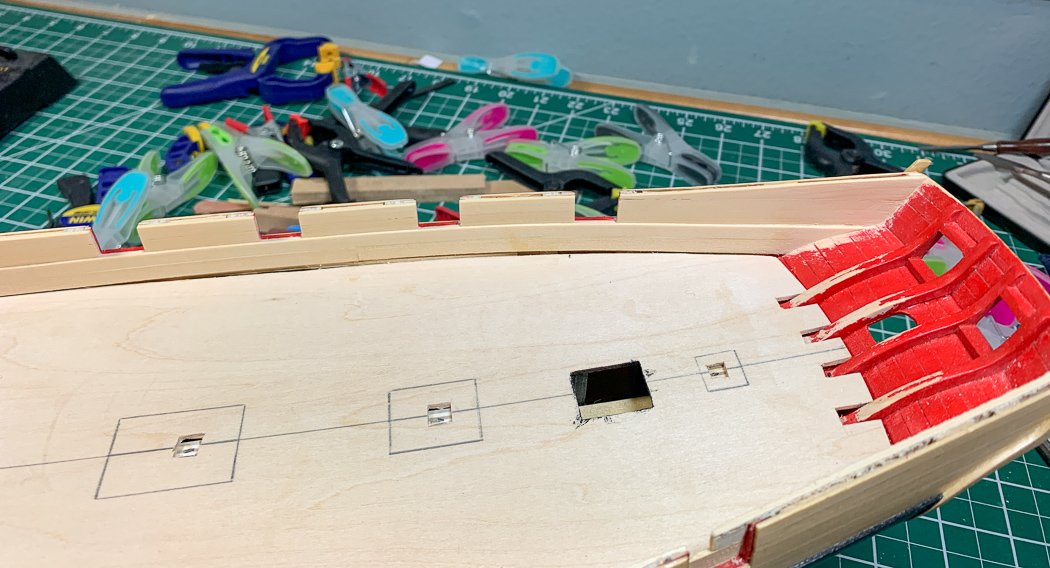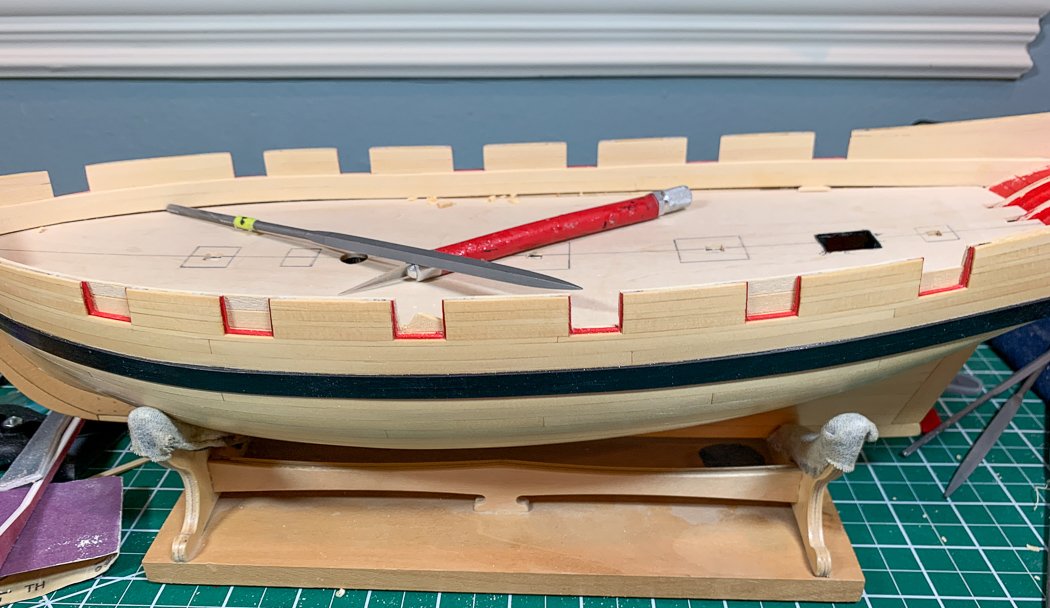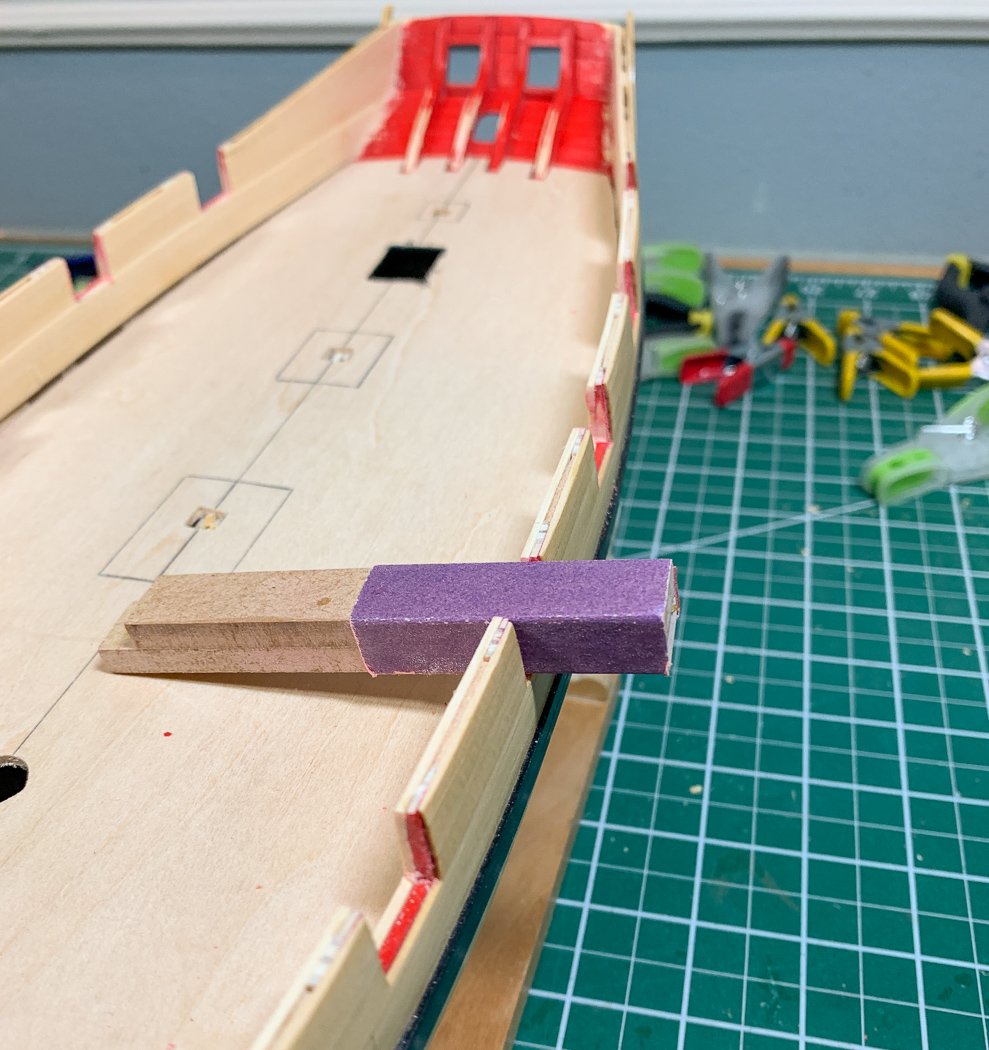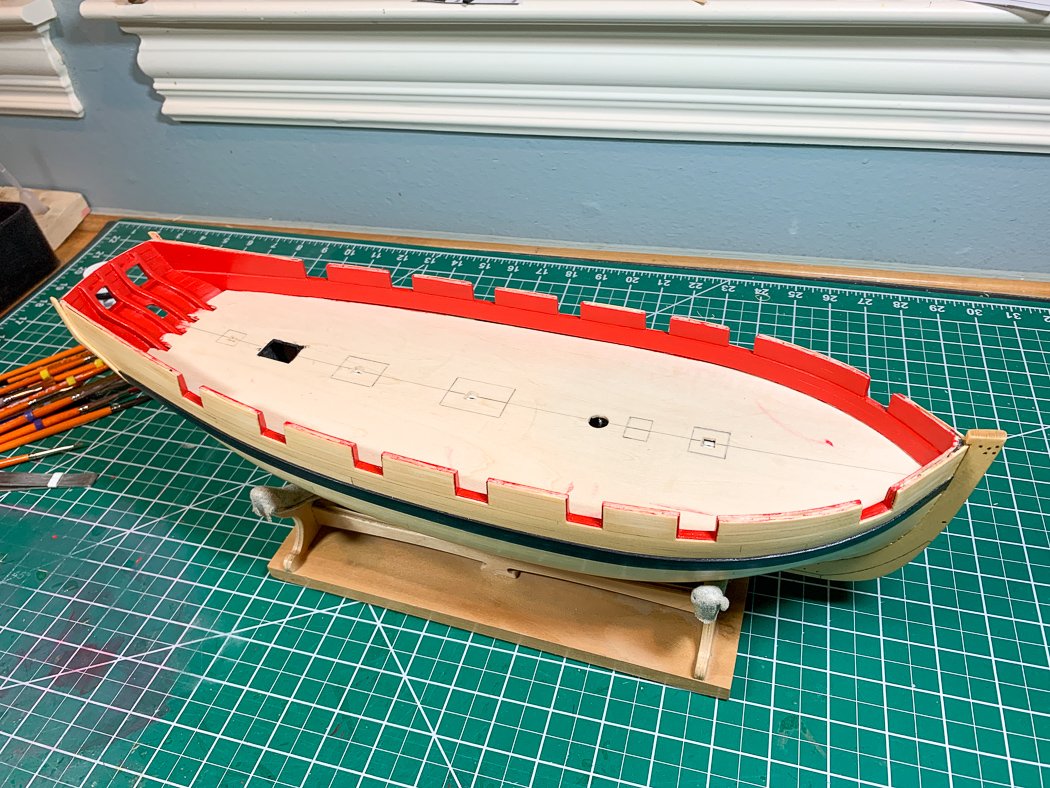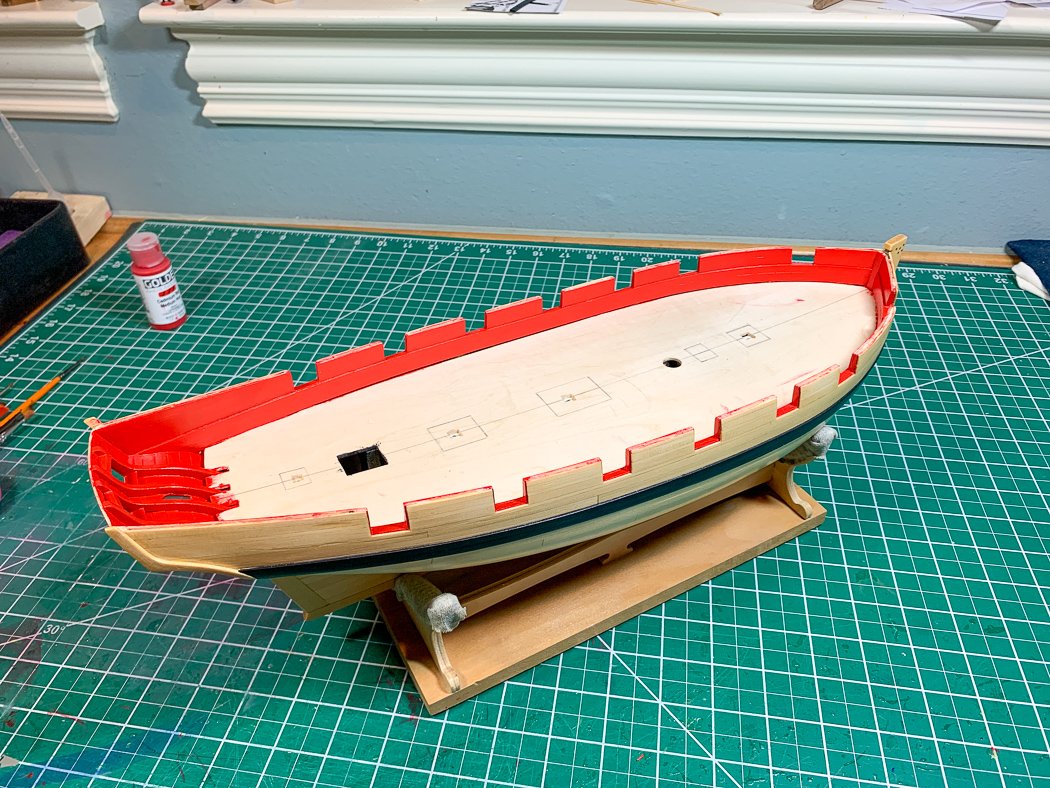-
Posts
4,106 -
Joined
-
Last visited
Content Type
Profiles
Forums
Gallery
Events
Everything posted by glbarlow
-
Excellent review James. I’ve never seen anything like this, really looking forward to seeing the first build logs. It seems one potential challenge is if any of those pre-formed planks break, were any extras provided for the more clumsy among us? I’m also confused by all the interior detail and trying to imagine myself making all those barrels. I assume you’d only do that if you’re a masochist or are planning to expose the interior as part of the build. Quite the new approach to kits. I’m also surprised at the reasonable price for so much material. So who’s building the first one so we can all watch?
-
The bulkheads on this model aren’t close. You’ll face the possibility of a wavy deck without the false deck. I doubt 1/32 or even. 1/16th would make a difference. I think we established you have a different POB than mine. I’m quite sure mine has a false deck. Your choice though, it’s your model. I can only offer my experience as suggestions
-
These particular models deserve some bright colors. I like your red, I think it’s a great choice and is a perfect look for this model. Gotta go big with RED!
- 263 replies
-
- Medway Longboat
- Syren Ship Model Company
-
(and 1 more)
Tagged with:
-
Well done, your attention to detail is impressive.
- 263 replies
-
- Medway Longboat
- Syren Ship Model Company
-
(and 1 more)
Tagged with:
-
Thanks for the tip John, I’ll see if I can locate one for trying fancier fancy moulding. 😀
- 778 replies
-
- cheerful
- Syren Ship Model Company
-
(and 1 more)
Tagged with:
-
I’ve never not done inner bulwarks before decking to ensure a clean tight fit. I use a laser level to true up the masts. Your problem is either a warped dowel than or the slot is off, not entirely uncommon in some kits. A leveling process between the table, the ship, and the mast is a common step to take. I don’t follow your measurement process other than it seems it’s over complicating things. I doubt an exact knife would do much, you might be able to fake it with a mini chisel If that’s the look you want why not just cut the planks and lay them for real. Basic kits like this one call for full length planks only because it’s easier for beginners. It’s not hard to cut them, the only challenge is determining your planking shift pattern, which you musT do in advance of the first plank. You can lay full length ones in the center that will be covered by deck furniture.
-
Both of those places sound cold, but then I’m a Texan. We recently set a historic high for The Dallas area, 106 F, 41 C for those across the pond. That’s hot. Fortunately it was a one day thing. Your a never ending source of skills Derek. I think there is silver soldering in my future with Cheerful, the paste is something I’ll definitely try, I’ve only attempted it with the old spool of solder in the past with mixed result.
- 725 replies
-
- vanguard models
- speedy
-
(and 1 more)
Tagged with:
-
Thanks Derek, it does look like a ship now. Thanks also everyone for the likes and for stopping by.
- 778 replies
-
- cheerful
- Syren Ship Model Company
-
(and 1 more)
Tagged with:
-
Such great detail in this model and so finely brought out with your skills Rusty. Did you choose to go with the pear for your decking? The wood looks great in the hold
- 642 replies
-
- winchelsea
- Syren Ship Model Company
-
(and 1 more)
Tagged with:
-
I've been looking forward to it too, being done with it. The Amati scrapers won't work - as someone noted the smaller one isn't small enough for these 1/16 x 1/32 strips. I've managed to make one from a brass plate, I'll report in the next post how I'm doing with it. 😄 I like the color contrast as well, the black, red, and AYC do all look good together. The upper part of the hull is a bit beat up at the moment, it'll look even better once I solve, I mean install the moulding.
- 778 replies
-
- cheerful
- Syren Ship Model Company
-
(and 1 more)
Tagged with:
-
Well its all fun Chuck. 😄 I agree, I've looked forward to getting to this stage - the one after the moulding...
- 778 replies
-
- cheerful
- Syren Ship Model Company
-
(and 1 more)
Tagged with:
-
Thank you all again for the likes, comments, and checking in on my build log. Next up is planking the bulwarks. The first step is adding a 3/64 vertical strip as a false keel/stem at the bow. I elected to make it 1/16th thick so the spiriketing would be flush, while it stands proud for the upper two planks. The first 3/16, 3/64 thick plank is added with its top even to the bottom of the port sills. This is another of those things had to go right back at the beginning in order for that plank to run smoothly. I mention this only as a reminder to future Cheerful builders to take the slow careful time to get those measurements right. Just as important as a properly faired hull is a properly measured one, no gun port patterns to guide you on Cheerful. Here is the first layer of planking, prior to adding the spirketing. The plans call for a second 3/16 plank to go below this first one, but I found I needed a 7/32 to leave an acceptable amount of space below. I’ve also lightly sanded the outer hull with 400 grit above the wales to make ready for the moulding coming up next. I chose to cut the top row from the stern most port to the transom as a triangle from a sheet of 3/64 thick stock. The alternative with my stern would have been to have a small triangular sliver to fill at the top. It won’t be noticeable once sanded and painted and importantly it provided more wood to adhere to the bulwarks. I cut it over-sized, glued it on, then trimmed it down to fit. I imagine transom heights will very from one model to the next. In this photo you can see I painted the inside of the area where the skylight will be and added a few strips of deck planking (before adding the false deck). I don’t know if it will show once the skylight is there, but what the heck, it took 5 minutes to do. I then added the two rows of planks above the sills. There are lots of ways to do this. I could have, like I did on the outside where rabbits were required, cut individual planks between the ports. I chose to run planks the full length and then cut the ports out with my #11 blade. I feel like I get a smoother plank run this way and I’m comfortable working the ports open with the #11 blade by first cutting down the edge a little, peeling it back, then repeating that multiple times while alternating sides to prevent splintering or cracking until the waste falls away. You can see the ports in various stages of being roughed out in this photo and one above. I don’t have planks long enough for the full length, the holes and gaps are when a plank terminates I end it in the middle of an open port. The bottom two planks now have a second row of 1/32 thick planks to simulate the spirketing, I rounded the top edge a little with 400 grit to soften the edge. In reality this was a thick row of planks, not two layers, but no one will know the difference. It’s good to remember we’re building models, not actual ships and its ok to simulate some things. Along with my #11 blade and needle file to square the corners, I brought out the “port sander” jig I made so long ago when the sills first went in, only this time turning it upside down so I only sanded the sides and not the bottom and ensuring all the ports are the proper finished width. I like how the lens distortion in this photo makes the stern look long and skinny, merely an illusion. With everything shaped and fitted it’s time to paint. Here she is with my nice bright red paint. As I said at the beginning of my log I was opting for RED! on this model. I think I’ve achieved that with my Golden Cadium Medium Red, I like it. (although its not as red-orange as it appears in these photos, it's bright but not this bright). Now I’ve put off adding the fancy moulding as long as I can, that and the cap rails are up next.
- 778 replies
-
- cheerful
- Syren Ship Model Company
-
(and 1 more)
Tagged with:
-
I lock it it with wood glue using a laser level to make sure it’s straight. It is an anxious time ensuring it dries straight, but once it is no worries from there. You have to tension the lines so they are taunt but not tight. I use the analogy of a guitar string, just short of floppy. Also where the bottom up inside out comes into play, this helps keep things properly aligned. Click on the link for my Lady Nelson build In my signature line below and scroll way down. I describe my process for rigging and stepping the mast. It should be of some help if you choose my method. Don’t over think it, you can adjust as you go.
-
This is my 1,000th post on MSW. I don’t have anything interesting to say but thought I should at least memorialize number 1,000 here on my build log. I’ll have a new update soon. A lot of non-model activity is going on, limiting my time in the shop. Yay, 1,000 posts. 🎉🎊🎈🍾
- 778 replies
-
- cheerful
- Syren Ship Model Company
-
(and 1 more)
Tagged with:
-
Clever recovery but Chris’ designs don’t require any form of filler at the bow, you may want to study your first planking pattern to determine where you went wrong before starting the second planking. The number of full run tapered planks at the bow will equal the same number of full width planks midship. This where lining the hull and tick strips pay off. Just trying to help.
-
I don’t favor that method at all. I build the full mast and attach everything rope, shroud, and block l can off the ship. It looks like a tangled mess but it is a much smoother process than running the lines after it’s stepped on the ship. Once the mast is up and rigged then I add the yards on the ship. Since the lifts are part of that rigged mast it goes easier. Put a pin in the center back of the yard and match and glue it to the right location as shown by the plans for each yard. Even still the ropes and blocks have to be attached in the right order. Generally from the inside out and from the bottom up is a reasonable guide for the order. The plans are all you need for rigging, instructions would be more confusing than helpful in my experience. Other than rat lines, rigging the ship is a fun part of the build. Sooo much string...
-
I hope your enjoying your decisions, don’t let a log or other builders dictate anything. Your cannon rigging looks great.
- 436 replies
-
- vanguard models
- alert
-
(and 1 more)
Tagged with:
-
Tell her spray cans are bad for your Lungs and the ozone layer😁
- 164 replies
-
- vanguard models
- flirt
-
(and 1 more)
Tagged with:
-
May want to do a test to compare a spray can to using a brush on the hull. The brush strokes on a wooden sailing ship would look more natural than the static look of spray paint, in my opinion.
- 164 replies
-
- vanguard models
- flirt
-
(and 1 more)
Tagged with:
About us
Modelshipworld - Advancing Ship Modeling through Research
SSL Secured
Your security is important for us so this Website is SSL-Secured
NRG Mailing Address
Nautical Research Guild
237 South Lincoln Street
Westmont IL, 60559-1917
Model Ship World ® and the MSW logo are Registered Trademarks, and belong to the Nautical Research Guild (United States Patent and Trademark Office: No. 6,929,264 & No. 6,929,274, registered Dec. 20, 2022)
Helpful Links
About the NRG
If you enjoy building ship models that are historically accurate as well as beautiful, then The Nautical Research Guild (NRG) is just right for you.
The Guild is a non-profit educational organization whose mission is to “Advance Ship Modeling Through Research”. We provide support to our members in their efforts to raise the quality of their model ships.
The Nautical Research Guild has published our world-renowned quarterly magazine, The Nautical Research Journal, since 1955. The pages of the Journal are full of articles by accomplished ship modelers who show you how they create those exquisite details on their models, and by maritime historians who show you the correct details to build. The Journal is available in both print and digital editions. Go to the NRG web site (www.thenrg.org) to download a complimentary digital copy of the Journal. The NRG also publishes plan sets, books and compilations of back issues of the Journal and the former Ships in Scale and Model Ship Builder magazines.


